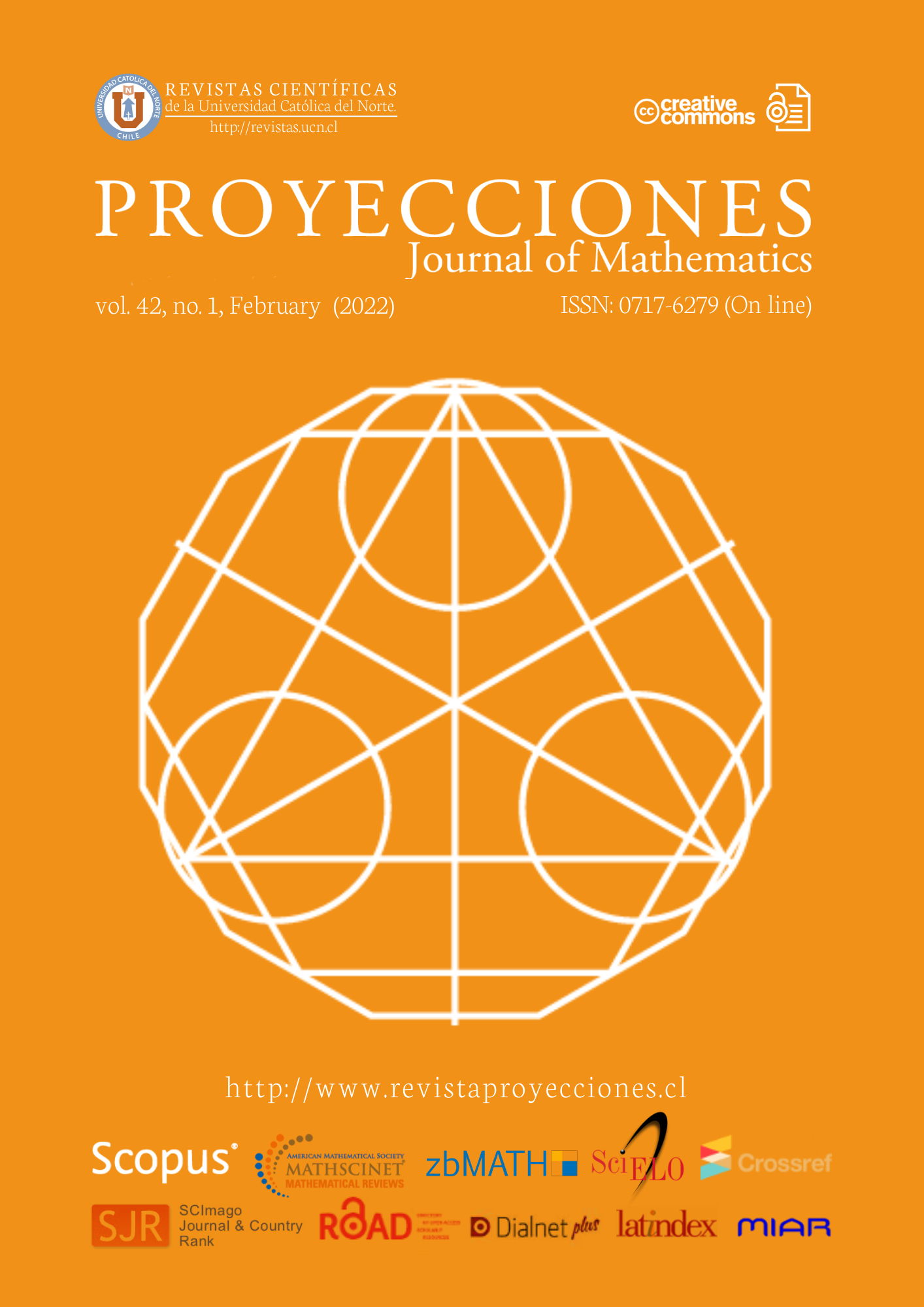Open global shadow graph and it’s zero forcing number
DOI:
https://doi.org/10.22199/issn.0717-6279-5305Keywords:
zero forcing set, zero forcing number, open global shadow graphAbstract
Zero forcing number of a graph is the minimum cardinality of the zero forcing set. A zero forcing set is a set of black vertices of minimum cardinality that can colour the entire graph black using the color change rule: each vertex of G is coloured either white or black, and vertex v is a black vertex and can force a white neighbour only if it has one white neighbour. In this paper we identify a class of graph where the zero forcing number is equal to the minimum rank of the graph and call it as a new class of graph that is open global shadow graph”. Some of the basic properties of open global shadow graph are studied. The zero forcing number of open global shadow graph of a graph with upper and lower bound is obtained. Hence giving the upper and lower bound for the minimum rank of the graph.
References
A. Aazami, Hardness results and approximation algorithms for some problems on graphs, UWSpace, 2008. [On line]. Available: https://bit.ly/3X7NwI1
AIM Minimum rank- special graphs work group, “Zero forcing sets and the minimum rank of graphs”, Linear Algebra and its Applications, vol. 428, no. 7, pp. 1628-1648, 2008. https://doi.org/10.1016/j.laa.2007.10.009
D. Amos, Y. Caro, R. Davila, and R. Pepper, “Upper bounds on the k-forcing number of a graph”, Discrete Applied Mathematics, vol. 181, pp. 1-10, 2015. https://doi.org/10.1016/j.dam.2014.08.029
A. Berman, S. Friedland, L. Hogben, U. G. Rothblum, and B. Shader, “An upper bound for the minimum rank of a graph”, Linear Algebra and its Applications, vol. 429, no. 7, pp. 1629-1638, 2008. https://doi.org/10.1016/j.laa.2008.04.038
D. Burgarth and V. Giovannetti, “Full control by locally induced relaxation”, Physical review letters, vol. 99, no. 10, p. 100501, 2007. https://doi.org/10.1103/PhysRevLett.99.100501
D. W. Cranston and O. Suil, “Hamiltonicity in connected regular graphs”, Information Processing Letters, vol. 113, no. 22-24, pp. 858-860, 2013. https://doi.org/10.1016/j.ipl.2013.08.005
M. Gentner, L. D. Penso, D. Rautenbach, and U. S. Souza, “Extremal values and bounds for the zero forcing number”, Discrete applied mathematics, vol. 214, pp. 196-200, 2016. https://doi.org/10.1016/j.dam.2016.06.004
Leah.S.Mays, The Zero Forcing Number Of Bipartite Graphs. 2013. [On line]. Available: https://bit.ly/3F403Tz
D. D. Row, “A technique for computing the zero forcing number of a graph with a cut- vertex”, Linear Algebra and its Applications, vol. 436, no. 12, pp. 4423-4432, 2012. https://doi.org/10.1016/j.laa.2011.05.012
E. Sampathkumar and H. Walikar, “The connected domination number of a graph”, Journal of Mathematical Physics Science, vol. 13, no. 6, pp. 607-613, 1979
Published
How to Cite
Issue
Section
Copyright (c) 2023 Raksha Malur, Charles Dominic

This work is licensed under a Creative Commons Attribution 4.0 International License.
-
Attribution — You must give appropriate credit, provide a link to the license, and indicate if changes were made. You may do so in any reasonable manner, but not in any way that suggests the licensor endorses you or your use.
- No additional restrictions — You may not apply legal terms or technological measures that legally restrict others from doing anything the license permits.












